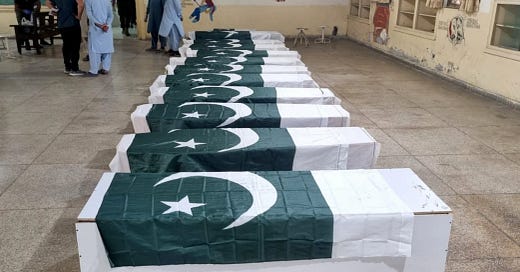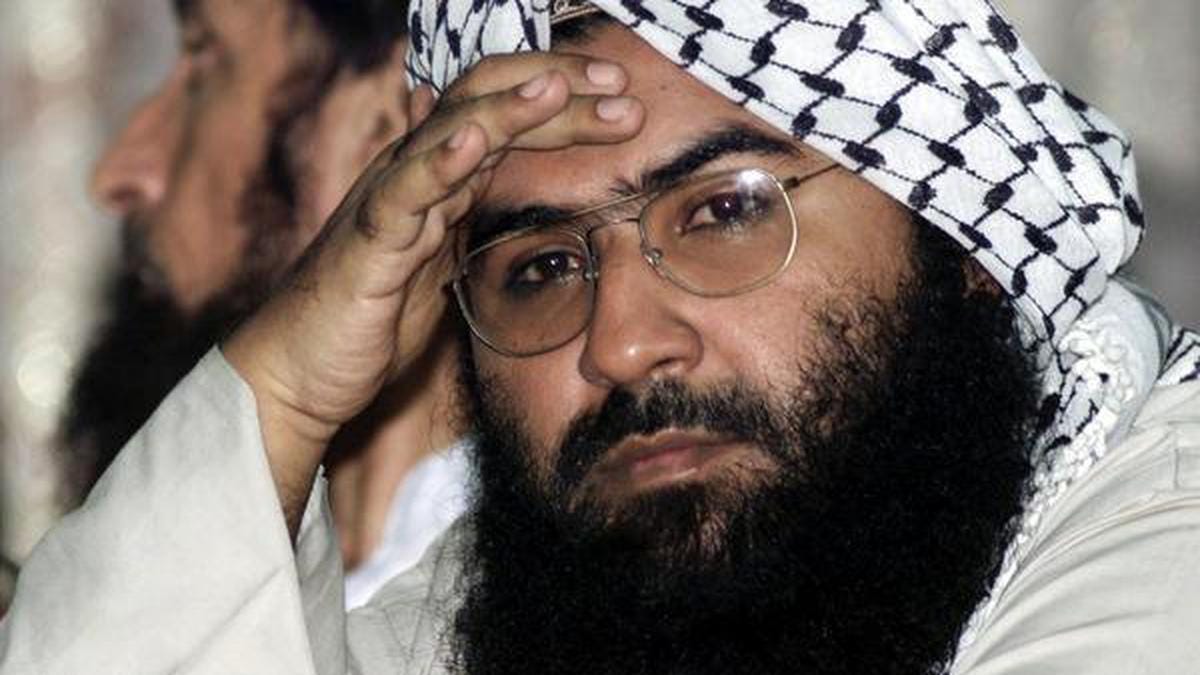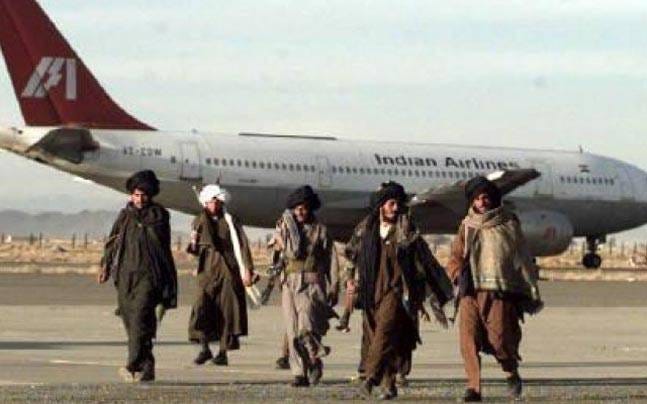Masood Azhar: The Face of Terror that Dared to Deface our Homeland Must be Erased from the Surface of the Earth
The Coward Escaped Bahawalpur by Sheer Luck—But With Ten Kin Eliminated, His End Is Only a Matter of Time.
Operation Sindoor: India’s Fiery Verdict from the Skies
In the dead of night on May 6–7, 2025, India sent a chilling message to the enemies of the Republic: those who wage war against Bharat shall pay with their lives. Operation Sindoor, a masterclass in precision warfare, struck nine key terror facilities operated by the Pakistan-backed Jaish-e-Mohammed (JeM), across both Pakistan and Pakistan-occupied Kashmir. At the centre of this cross-border purge stood Bahawalpur—a city that for too long had served as the wretched womb of Masood Azhar’s terror empire.
The crown jewel of the strike was the obliteration of Markaz Subhan Allah, JeM’s 15-acre headquarters. There, in one glorious wave of justice, ten members of Masood Azhar’s family were exterminated, including his brother Huzaifah, sister, mother, and several nieces and nephews. Four senior operatives, including the notorious Maulana Ammar, were also sent to their graves. The man who had sown terror across India for decades was left gutted, grieving, and isolated. Though the butcher of Pulwama himself narrowly escaped, his sanctuary burned—and his bloodline paid.
The Butcher Weeps—But from Behind Fortress Walls
Days later, Azhar emerged—not on a battlefield, but behind the safety of Pakistan’s walls—to mourn his fallen kin. “I have no regret,” he declared, “only joy at their martyrdom.” Such twisted logic is the hallmark of a coward who incites martyrdom for others but shuns it himself. He who masterminded the deaths of innocents across India now wallows in poetic self-pity, too scared to pick up a rifle but bold enough to build armies of bombers and butchers.
His grief is meaningless. India’s message was clear: no bunker is deep enough, no country is safe enough. The fire that consumed Bahawalpur will one day reach the devil’s doorstep too.

Masood Azhar’s Trail of Terror: From Parliament to Pahalgam
Masood Azhar’s bloody resume is nothing short of a manifesto of evil. Since his disgraceful release during the 1999 Kandahar hijacking, this Pakistan-nurtured terrorist has directed strike after strike against India’s democratic institutions, civilian populations, and security forces. Sitting comfortably inside Pakistan, shielded by the ISI and Pakistan Army, he unleashed terror across India with venomous viciousness and ideological madness.
He co-planned the 2001 attack on the Indian Parliament, the beating heart of Indian democracy, in a joint operation with Lashkar-e-Taiba. The suicide strike killed 14 and nearly dragged South Asia to the brink of nuclear war. In 2008, JeM provided logistical support to the Mumbai attackers. In 2016, JeM militants infiltrated the Pathankot Air Force base, murdering seven Indian personnel. Then came the 2019 Pulwama suicide bombing, a horrific assault that killed 40 CRPF jawans—an attack so brazen that it provoked India’s first cross-border airstrike at Balakot.
Pahalgam and Beyond: The Unforgivable Sin
Just months ago, Azhar’s JeM operatives executed yet another act of barbarism—the 2025 Pahalgam massacre, where 26 unsuspecting tourists, including women, children, and a Nepali national, were slaughtered in cold blood. The attack was not just on civilians—it was an attempt to shred India’s social fabric, to break her spirit.
But it had the opposite effect. Pahalgam gave birth to Operation Sindoor. With Bahawalpur targeted and JeM’s senior command chain obliterated, India demonstrated that our response to terrorism is no longer reactionary, but preemptive and punishing.
Kandahar Hijacking: A Decision That Still Haunts Us
The story of Flight IC-814 is not just a hijacking—it is a scar on India’s soul. On December 24, 1999, the Indian Airlines aircraft, en route from Tribhuvan International Airport, Kathmandu to Indira Gandhi International Airport, Delhi, was hijacked in mid-air shortly after it entered Indian airspace. The Airbus A300, carrying 176 passengers and 15 crew members, was first diverted to Amritsar, but was inexplicably allowed to take off again—marking the first major failure in India’s counter-hijack response.
From there, the aircraft’s twisted odyssey began. It flew to Lahore, where Pakistani authorities refused to allow it to land, forcing it to circle until it was permitted to refuel. It then proceeded to Dubai, where 27 passengers, including women and children, were released, and one body—that of murdered Indian passenger Rupin Katyal—was deplaned. Finally, the hijackers flew the aircraft to Kandahar, Afghanistan, then under the grip of the Taliban regime, where it sat for seven harrowing days as negotiations unfolded under global scrutiny and domestic anguish.
In the end, the NDA government led by Prime Minister Atal Bihari Vajpayee faced a wrenching dilemma: rescue 155 innocent Indians or risk mass murder. With no military or diplomatic leverage in Taliban-controlled territory, India made a devastating choice: to release three jailed terrorists—Masood Azhar, Mushtaq Ahmed Zargar, and Ahmed Omar Saeed Sheikh—in exchange for the hostages’ safe return. In an image seared into the nation’s collective memory, the then courageous External Affairs Minister Jaswant Singh accompanied the terrorists to Kandahar to ensure the hostages’ release.
But what returned with Azhar was not just freedom—it was unleashed destruction. What India gained in lives saved, it lost in blood spilt over the next two decades. That single compromise birthed a reign of terror that would claim soldiers in Pulwama, pilgrims in Pahalgam, schoolchildren, airmen, and parliamentarians alike.
Kandahar was not just a hijacking—it was a tragedy written in compromise, courage, and catastrophic consequence. A lesson etched in fire, reminding India that no nation is safe until every terrorist is buried and every sponsor of terror held to account.
Pakistan’s Complicity and China’s Shield of Shame
Masood Azhar’s survival is not accidental—it is engineered. Pakistan has consistently denied his presence while simultaneously giving him protection, resources, and a pulpit for hate. The ISI has nursed him like a strategic asset, while successive Pakistani leaders have danced around the truth.
Equally complicit is China, which blocked Azhar’s designation as a global terrorist at the United Nations four times before yielding in 2019. Beijing’s geopolitical hypocrisy and Islamabad’s two-faced diplomacy have cost India hundreds of lives. The world knows the truth—it is time they act on it.
India’s New Doctrine: Retaliation with Resolve
With Operation Sindoor, India’s counter-terror doctrine matured into a formidable blend of precision, strategy, and national will. The strikes were carefully calibrated—not to provoke a war, but to deliver punishment where due. India showed it will no longer be boxed into reactive diplomacy or suffer in silence.
This is not just a military shift; it’s a civilizational response. A declaration that Bharat will protect her sons and daughters—at home and across borders.
The Last Word: His Time Will Come
Masood Azhar may have escaped this time. But the writing is on the wall. His bunkers can’t shield him forever. The world is closing in. The Indian lion is awake—and it will not rest until every last trace of terror is hunted down and destroyed. He has evaded justice once too often. But now, his clock ticks louder than ever. India does not forgive. India does not forget.
The face of terror that dared to deface our homeland must—and will—be erased not just from the surface of the earth, but, in the words of Winston Churchill, purged “from the brow of mankind”—as the curse upon humanity that it truly is.
POST SCRIPT
Lessons Ignored: A Personal Reflection on Two Amritsar Hijackings of 1993
In April 1993, as Deputy Commissioner and District Magistrate, I had the rare responsibility of managing two separate aircraft hijacking incidents—both handled successfully on Indian soil. In one case, the hijacker was persuaded to surrender through negotiation, and in the other, after nearly a day-long standoff, the aircraft was stormed by NSG commandos flown in from Delhi, who swiftly neutralised the threat without civilian casualties.
These operations were a testament to what coordinated civil administration, tactical patience, and national resolve can achieve.
Alas, no institutional lessons were learned. Just six years later, in December 1999, the civil administration at Amritsar failed its duty—allowing the hijacked IC-814 to take off, instead of containing it. That one moment of hesitation unfolded into a week-long saga of national ignominy, culminating in the shameful release of Masood Azhar—a decision that haunts the nation to this day.
By Karan Bir Singh Sidhu, IAS (retd.) (Punjab Cadre, 1984 batch), policy analyst and geo‑strategic expert, retired Special Chief Secretary, Government of Punjab, and former Deputy Commissioner Amritsar (1992–96), Additional Deputy Commissioner Amritsar (1990–92), District Magistrate, Police District Batala (1989) – a frontline administrator who battled Pakistan‑abetted proxy war.
IC-814 Hijacking to Kandahar: Unlearnt Lessons from the 1993 Twin Amritsar Hijackings
The IC-814 Hijacking: A Grim Reminder of India's Massive Security Lapse






I fully agree with you sir
First of all we are indians and we are proud of this. We will never hesitate to sacrifice ourselves for our country.
Waheguru ji ka khalsa waheguru ji ki fateh